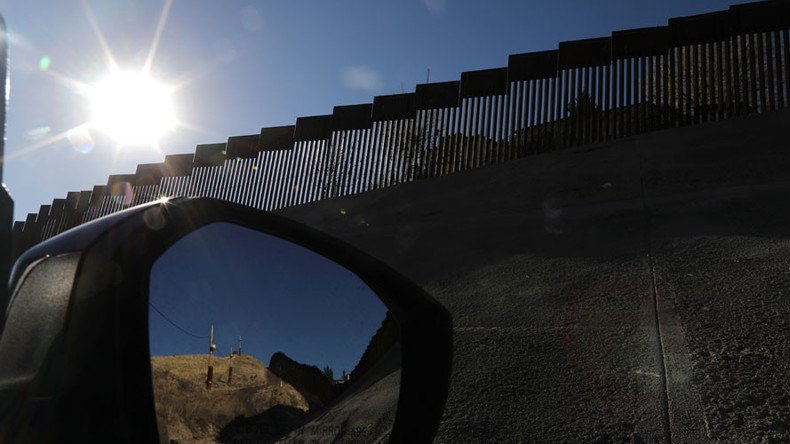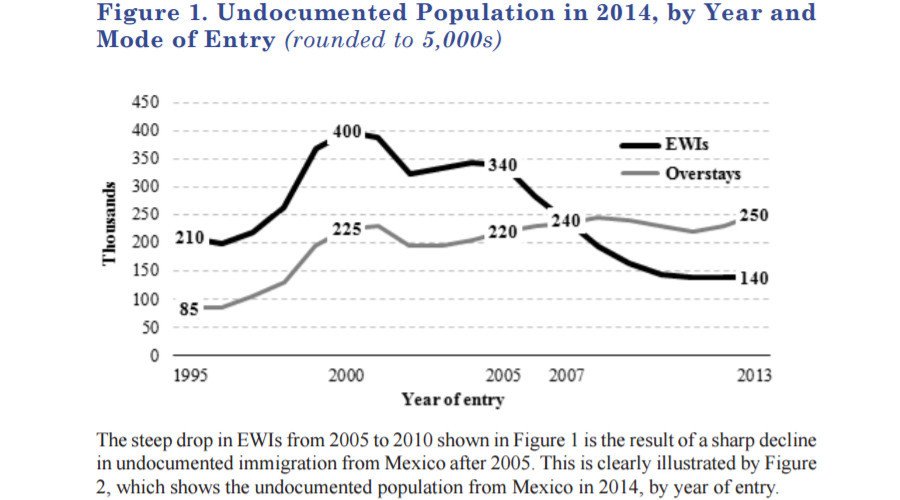Overstayers, not border crossers greatest driver of illegal US immigrants

A new report argues that visa overstayers are the major driver of undocumented immigrants in the US. The Department of Homeland Security said over 500,000 overstayed their visas in 2015 but the numbers are estimates because of loopholes in how people exit the country.
Demographers found that two-thirds of those who arrived in 2014 did not illegally cross a US border but were granted entry after being screened on non-immigrant temporary visas. They then overstayed or violated the terms of their visas, according to the report.
The percentage of overstays increased somewhat from 1995 to 2000, stayed steady until 2004, and then increased rapidly from 2005 to 2010. Overstays reached 61 percent of the total in 2010 and continued to rise, reaching about 66 percent of the total in 2014.
#Borderwall does not deter unauthorized immigration: Visa overstays outnumber entries w/o inspection by 2/3 in 2014 https://t.co/lOb29GRdKE
— CMS New York (@CMSnewyork) April 11, 2017
The data is drawn from estimates of the undocumented population in 2014 compiled by the New York-based Center for Migration Studies, (CMS) and estimates of overstays for 2015 by the Department of Homeland Security (DHS).
About 4.5 million US residents, or 42 percent of the total undocumented population, were overstays, the report states citing data from 2014.
Overstayers were found to have exceeded those who entered without proper immigration documents every year since 2007. Furthermore, 600,000 more overstays than those who entered without immigration documents have arrived since 2007.

The majority of overstays and undocumented came from Mexico, with one-third of arrivals in 2014 staying over the time limit. The majority of visa violators head to California (890,000) followed by New York (520,000), Texas (475,000), and Florida (435,000).
Two states had 47 percent of the 6.4 million undocumented population in 2014 – California (1.7 million) and Texas (1.3 million).
AP reported that the US government is unable to confirm the total number of travelers who remain in the country after their visas expired.
Airlines and vessels report departures to the DHS; but foreigners who leave in vehicles through ports of entry along the border are not accounted for because of “major physical infrastructural, logistical and operational hurdles,” according to the 2016 DHS report.
The US Attorney General, Jeff Sessions, announced just this week reforms and guidelines that would lead to the speedy hiring of immigration judges and the detention of all adults crossing the border. Immigration advocates have decried the move as bigoted.
'This is new era, the Trump era': AG Sessions reveals enforcement plan at US-Mexico border https://t.co/viqlSXAT3Wpic.twitter.com/076M1qFPy8
— RT America (@RT_America) April 12, 2017
The report’s author, Robert Warren, argues the Trump administration’s orders and plans on the border don’t reflect current migration patterns.
“Overstays have been steady for the past 10 to 12 years, but illegal entries into this country are at a level we haven’t seen in 20 to 30 years,” the demographer told AP. “Building a wall across the entire southern border is a statement of policy failure.”
The study estimated the number of people crossing the border illegally fell from 400,000 in 2000 to 140,000 in 2013.

Customs and Border Protection said 12,192 people were caught trying to enter the US illegally from Mexico in March for the second straight monthly decline in arrests at the border. The agency hadn’t reported fewer arrests in a month in at least 17 years.
Undeterred, the Trump administration is preparing to spend somewhere between $8 billion and $20 billion to build a wall along the 2,000 miles southern border, and additional 5,000 border patrol agents are to be added at additional cost.
READ MORE: Border crossings over Rio Grande dry up as Trump's wall looms
Among its conclusions and recommendations, the report’s authors suggest rather than extending the wall, border resources might be better directed to supporting rule of law and economic development initiatives in the states of Central America, refugee screening in Central America, or improving the screening of visitors at US visa-issuing posts.
“Such shifts in the allocation of resources would address the primary source of undocumented immigration – overstaying temporary visas – and the cause of the flight of large numbers of migrants from the violence-plagued [Central America] to the United States and elsewhere,” the demographers said.












